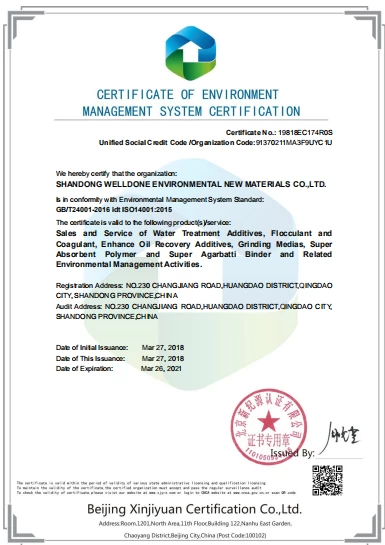Application and Dosage of Sodium Polyacrylate in Sludge Solidification
Sodium polyacrylate (SPA) is a polymer with various applications due to its excellent water-absorbing and binding properties. In the field of sludge management, SPA has gained attention for its potential in sludge solidification. This article aims to discuss the usage and dosage of sodium polyacrylate in sludge solidification processes.
Sludge Solidification Process:
Sludge solidification involves transforming liquid or semi-liquid sludge into a stable solid form, reducing its volume and preventing further contamination. The process typically includes mixing additives with the sludge to enhance solidification and immobilization. Sodium polyacrylate is one such additive known for its ability to bind and stabilize sludge particles.
Usage of Sodium Polyacrylate:
When using sodium polyacrylate for sludge solidification, the following steps can be followed:
Step 1: Sludge Preparation - Collect the sludge sample and determine its composition, moisture content, and physical properties. It is important to understand the characteristics of the sludge before selecting the appropriate sodium polyacrylate dosage.
Step 2: Additive Selection - Choose a suitable grade of sodium polyacrylate based on the desired solidification objectives and sludge characteristics. Consider factors such as molecular weight, viscosity, and compatibility with other additives if used.
Step 3: Mixing - Introduce the selected dosage of sodium polyacrylate into the sludge mixture. The most common method involves mechanical stirring or agitating equipment to ensure uniform distribution of the additive throughout the sludge.
Step 4: Curing and Drying - After thorough mixing, allow the sludge mixture to cure for a specific period, depending on the solidification requirements. During curing, the sodium polyacrylate will react with the sludge components, forming a stable and solid mass. Finally, dry the solidified sludge to achieve the desired moisture content.
Dosage of Sodium Polyacrylate: The appropriate dosage of sodium polyacrylate depends on several factors, including:
Sludge properties: Such as moisture content, particle size distribution, organic content, and chemical composition.
Solidification objectives: Desired strength, volume reduction, and contaminant immobilization requirements.
Sodium polyacrylate characteristics: Molecular weight, concentration, and manufacturer's recommendations.
Dosage ranges can vary widely but typically range from 0.5% to 5% (w/w) of the sludge dry weight. However, it is crucial to conduct small-scale laboratory tests or pilot studies to determine the specific dosage for each sludge type and solidification goal. These tests will help optimize the dosage and evaluate the resulting solidification efficiency and stability.
Conclusion:
Sodium polyacrylate offers great potential in sludge solidification processes due to its binding properties. By understanding the sludge characteristics, selecting an appropriate grade of sodium polyacrylate, and determining the correct dosage, effective solidification can be achieved. However, it is essential to conduct thorough testing and consider site-specific requirements to ensure successful and sustainable sludge management practices.











